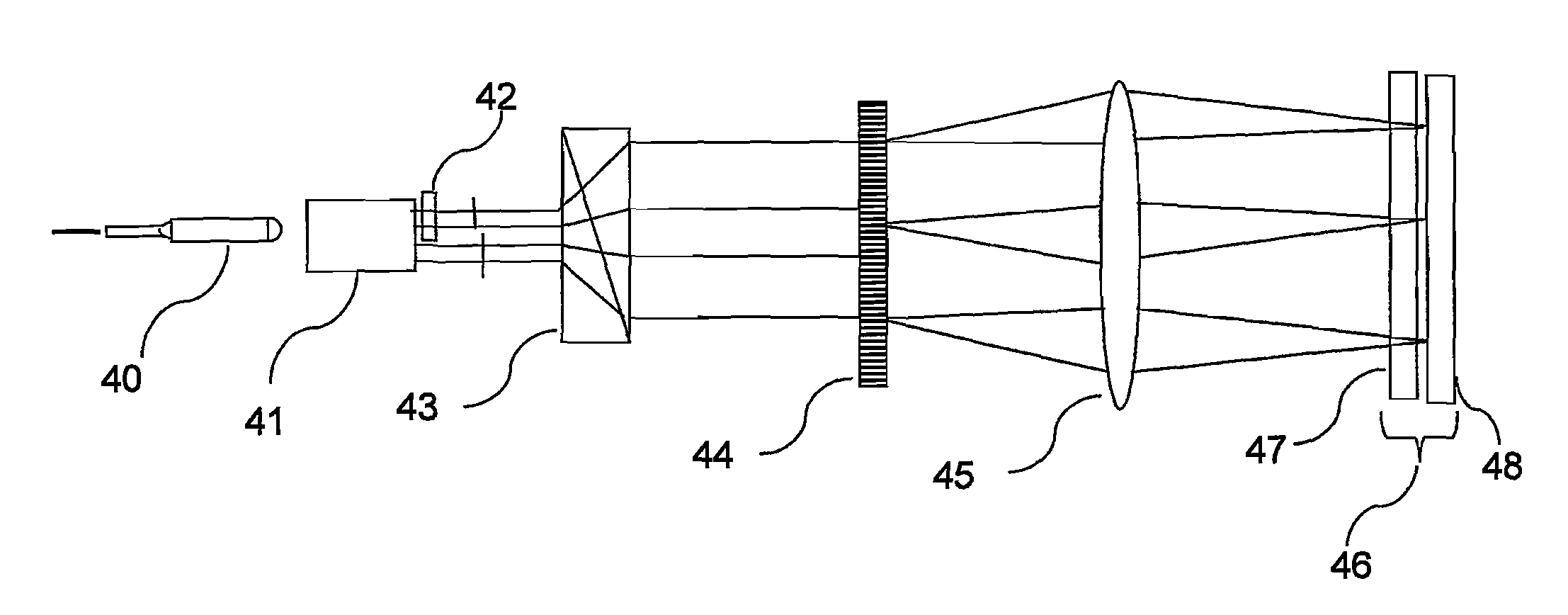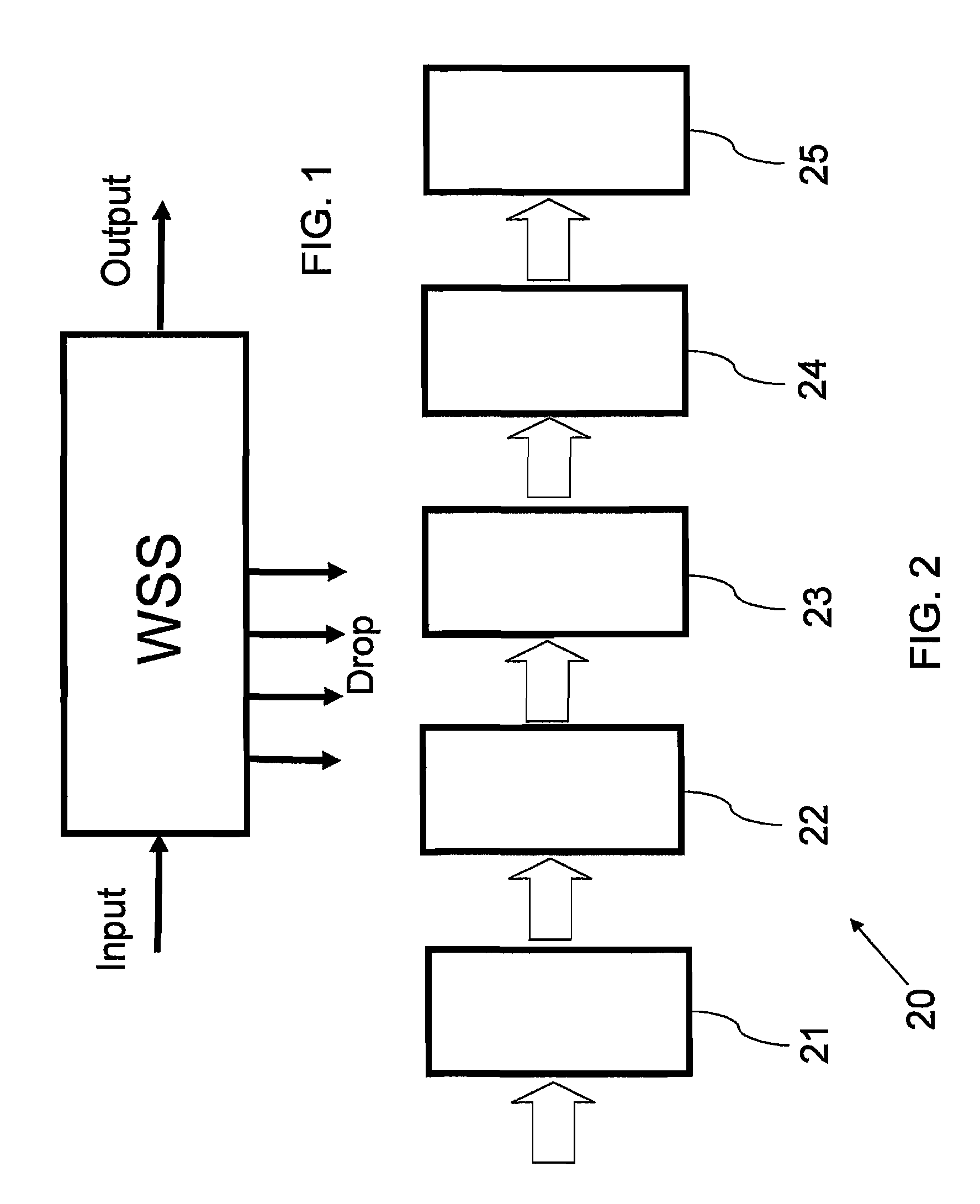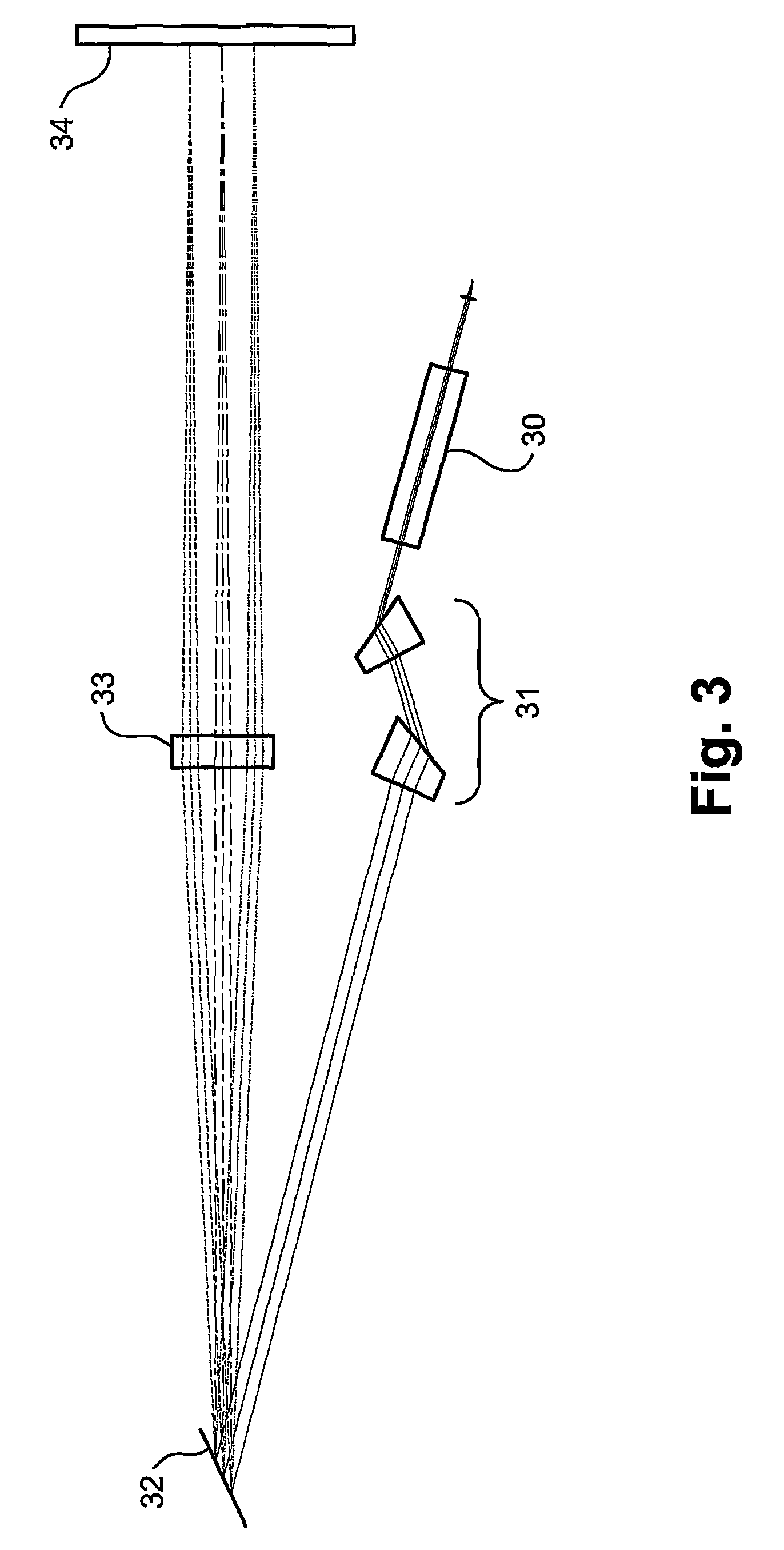Optical wavelength selective router
a selective router and optical technology, applied in the direction of optical elements, multiplex communication, instruments, etc., can solve the problems of unused beam steering and light of a specific wavelength
- Summary
- Abstract
- Description
- Claims
- Application Information
AI Technical Summary
Benefits of technology
Problems solved by technology
Method used
Image
Examples
Embodiment Construction
[0055]Reference is now made to FIG. 1, which illustrates schematically a block diagram of the functionality of an optical wavelength router, including a single input port, a single main output port and a number of Drop ports. The function of the router is to either transmit, to block or to attenuate any wavelength channel in the input signal, and to direct that signal, if transmitted or attenuated, to any of the output or Drop ports.
[0056]Reference is now made to FIG. 2, which illustrates schematically the router 20 of FIG. 1, as implemented according to a preferred embodiment of the present invention, in the form of a block diagram of the functionality of the separate operative parts of the router. The signals are input to the router through a Fiber Interface Block 21, which accepts the input signals and converts them into free-space beams for polarization processing, lateral expansion and spatial manipulation. According to a preferred embodiment of the present invention, the free-...
PUM
 Login to View More
Login to View More Abstract
Description
Claims
Application Information
 Login to View More
Login to View More - R&D
- Intellectual Property
- Life Sciences
- Materials
- Tech Scout
- Unparalleled Data Quality
- Higher Quality Content
- 60% Fewer Hallucinations
Browse by: Latest US Patents, China's latest patents, Technical Efficacy Thesaurus, Application Domain, Technology Topic, Popular Technical Reports.
© 2025 PatSnap. All rights reserved.Legal|Privacy policy|Modern Slavery Act Transparency Statement|Sitemap|About US| Contact US: help@patsnap.com



